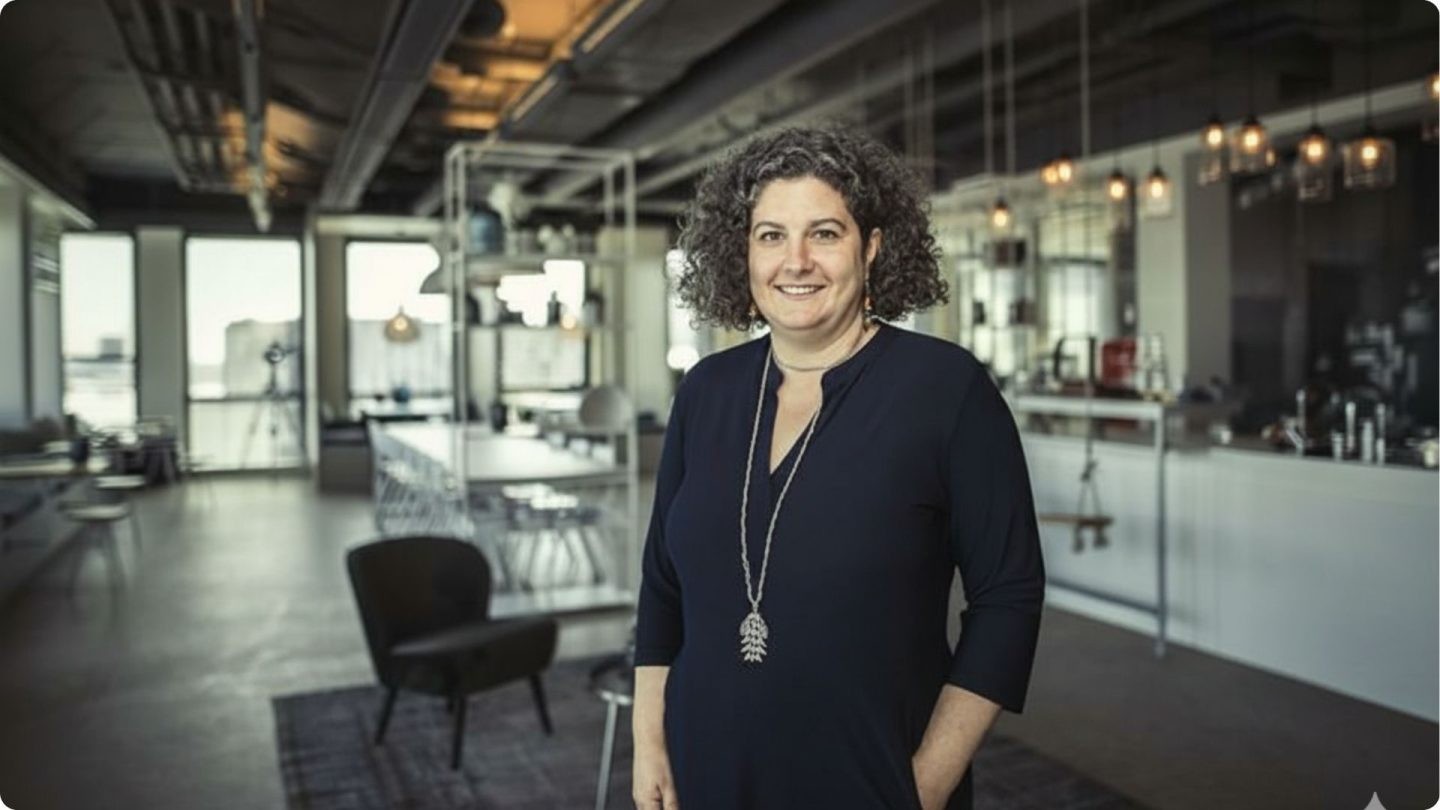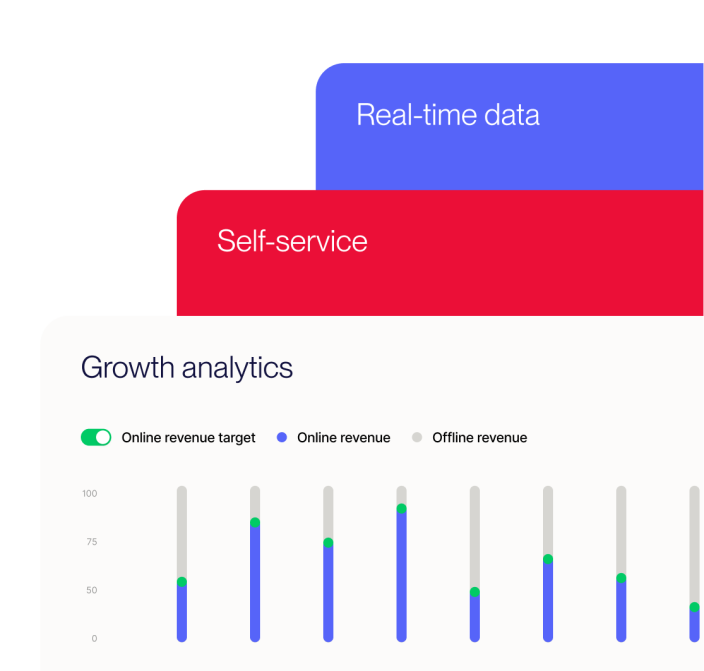The risk of stopping at efficiency: A chat with CPO Dimitra Retsina

The Sana Editorial Team sat down with Dimitra Retsina, Chief Product Officer at Sana Commerce, in advance of her session at Sana Connect 2025, to discover how businesses can evaluate the efficacy of their e-commerce efforts and learn how to improve upon their successes.

When B2B businesses are first considering a new e-commerce platform, what is the problem that they’re usually trying to solve?
Dimitra: It depends on the stage that the companies are in, as well as the state of their own growth. For SMBs, this would typically mean operational efficiency. A mid-market is somewhere in between operational efficiency and a path towards growth, while enterprise businesses focus on e-commerce as a growth channel; a growth enabler. So, across the board, there’s always an operational component and a growth component. It just depends on the stage.
Do you tend to find that businesses have more specific things that tend to recur, such as adoption?
Dimitra: Adoption is a very, very big part of it. For a lot of businesses, this is a new channel to be introduced, not only internally, but also for their buyers. It’s definitely one of the main first hurdles to address. It’s about changing habits. If you are used to having a sales rep on speed dial that you know will pick up the phone – someone who knows you and knows your business – you’re going to go that route rather than change the way you operate. To make the transition successful, users have to find value in the digital channel.

Once a business has achieved its initial e-commerce goals (operational efficiency, adoption), what’s the risk of stopping there? What’s the risk of saying, “we won.”?
Dimitra: I haven’t seen any business that doesn’t seek growth as they progress in time. Typically, that means you know you add another channel, but you seek different areas for growth, whether that is other markets or perhaps another web store. I don’t think any business, by choice, is in a static state. It’s naturally changing, right? You try to find more resilience to the changes in the market. Competitors start to enter. You need to grow to defend yourself also, you know, by becoming stronger in the market.
When you introduce a new channel, there’s always some sort of transformation that takes place. You will change operationally how you eventually address certain things. For example, with ROPO (research online, purchase offline), previously you may not have had the possibility to provide effective information and engage with your customers so that they are educated and prepared before they have more in-depth conversations with your sales rep. But as your e-commerce platform makes this transition from operational efficiency to growth engine, you can execute more effectively.
Are buyers becoming more savvy because of the technology that’s present? Are they driving demand for more information?
Dimitra: I think both things are happening, but it’s also that the evolution of B2C has trained the buyer to have more advanced expectations of their B2B experience.
Yes, they’re becoming more informed the more tools you give them to manage their business effectively. Delivering your services in a better way for the buyers creates the right conditions for both the buyers and the sellers to grow. It’s a win-win at the end.

There’s been a fundamental shift in how customers and sales representatives see their respective roles. How would you say that this has changed the relationship between businesses and the customers?
Dimitra: I think that there is a sense of urgency in today’s times, which affects the way that people work with each other. Slow pace is no longer the default, right?
If you are where your customer is at the moment that the customer is and you can service them well with a channel that is approachable and user-friendly for them, then then you do better business with your customers. That’s I think what the digital channel brings to the surface more than anything else.
But, I think it’s always a combination. It’s not that you would abandon your offline channels. It’s always a combination. It’s the same with SaaS products, you have product-led growth, you have product assisted sales there. These motions typically are designed to also complement each other and work with each other also for the right types of segments.

Your session at Sana Connect features guest customer speakers: why is it important to speak with customers who have made these transitions?
Dimitra: It’s one thing to hear it from us — speaking of operational efficiency and growth in relation to the product we provide — and another thing to hear it from those that made the choice to use the product, and how they benefited from it.
Their experience is not biased. I think that that is what brings a lot of value. There is not the bias that we would perhaps bring because it is our product. They hear it from the mouth of those that use it.
Customer feedback drives our innovation. We have invited several customers to work with us, give us feedback and co-create with us. We call that program the Inner Circle.
We have a research team that is working with a lot of effort to make sure that we understand the use case of our customers, whether our assumptions for a solution fit the problem. We then release resources that businesses can utilize differently, depending upon what stage of the journey their company is in: focusing operational efficiency or using their digital channel as a component in their growth engine.
Ultimately, we adapt and evolve when understand how our customers operate.
Similarly, hearing these customer experiences will help our audience drive their own innovation, no matter what stage of the digital evolution they’re in.
If you were to give advice to business leaders or companies that are in the middle of making these transformations, what advice would you give them to get unstuck?
Dimitra: I think businesses benefit when they have their own success plans made clear for themselves. Determine what you want to achieve as an outcome, and be very focused in pursuing it and executing the best that you can towards that success plan. This means rigorous prioritization and attention, and then I think the result will come.
Meet Dimitra Retsina at Sana Connect
Our Chief Product Officer, Dimitra Retsina, joins guest customer speakers Fabian Lutz, Chief Digital Officer, JENSEN-GROUP and Ashely Anne Ronan, E-commerce Manager at Nord-Lock Group, so you can get both sides of the story on turning a product vision into real world wins.
Hear more from Dimitra
Hear more from Dimitra
Her session on October 16th will feature leaders from JENSEN-GROUP and Nord-Lock Group as they share the real story behind e-commerce success.

More interesting resources
More interesting resources


